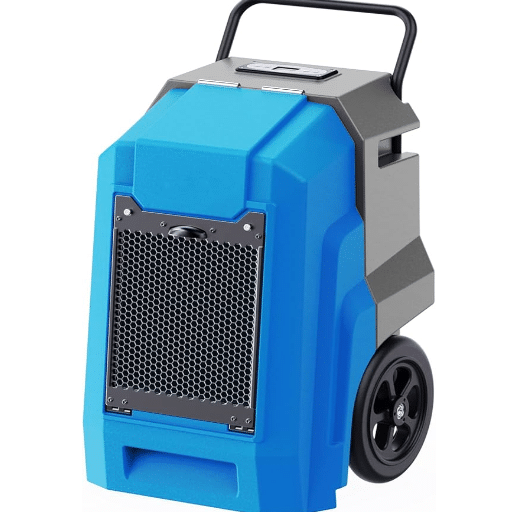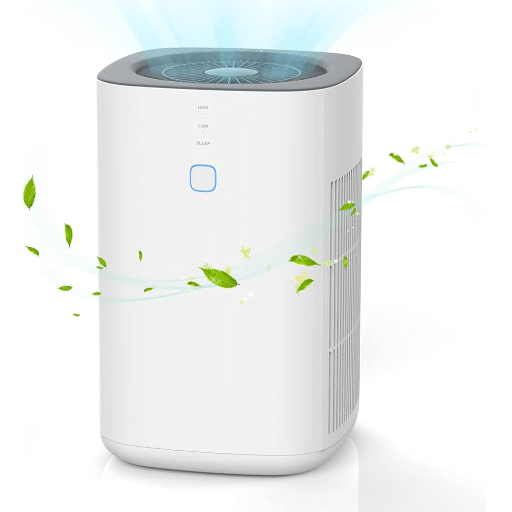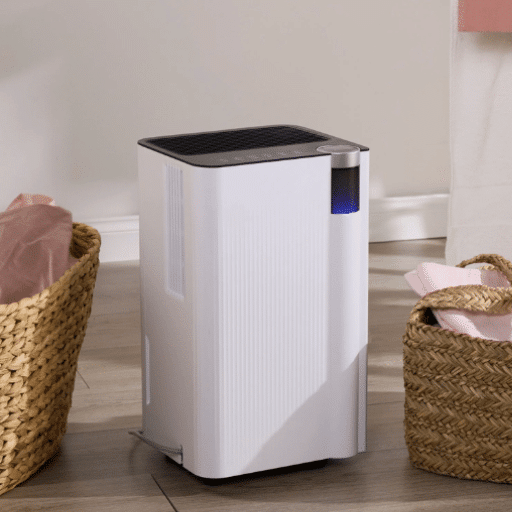The operating noise level is one of the most important considerations to take into account while purchasing a dehumidifier. Frequently, dehumidifiers find their use in bedrooms, offices, and other areas where silence is crucial. Does 51 dB mark a quiet enough space for your needs? How does it sound? This blog post explains everything around decibel levels and addresses the question if 51 dB is quiet enough for a dehumidifier’s operation. Moreover, we provide information on the most efficient, quietest dehumidifier models that will be available in 2025 so that you can strike the ideal equilibrium between performance and tranquility. Continue reading to uncover helpful tips, recommendations, and insights that will help you make the right choice for your space.
What is Considered a Quiet Dehumidifier?
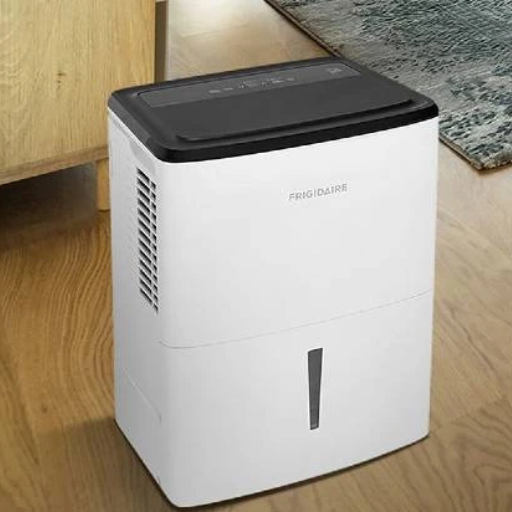
A quiet dehumidifier would operate at a sound level under 55 dB which is comparable to the gentle hum of a refrigerator. For most users, a dehumidifier that operates in the range of 40-50 dB is best since it balances maintenance of moisture content and sleep without disrupting daily activities. The level of decibels depends on the size, design, and technology used, but most modern quiet dehumidifiers are built with the intention of performance and silence in operation.
Understanding Noise Level: Is 51 dB Quiet?
From my study, it appears that 51 dB is within a generally accepted range for quiet noise levels, particularly in the context of home appliances like dehumidifiers. It is a fraction louder than a whisper, yet quieter than a conversation which is normally around 60 dB. Most users consider this level unobtrusive enough not to disturb day-to-day activities or even sleep during the night, although sensitivities to sound decibels differ on an individual basis. What is considered quiet by some might be heard by others.
The Benefits of a Quiet Dehumidifier
In case you need an extremely quiet dehumidifier, they provide a couple of notable benefits that impact comfort and productivity around your house. It primarily minimizes sound disturbances which make it perfect for bedrooms, nurseries, and offices where peaceful quiet is cherished. Dehumidifiers deemed as quiet, like the ones at 51 dB, work in the background giving room for restful sleep and undisturbed focus. In addition, they aid in optimal conditions of moisture control reducing excess moisture which leads to mold, mildew, and dust mites but all done without any annoying sounds in the background. Above all, mute appliances enhance customer satisfaction by bringing together the advantages of controlling humidity while ensuring peace. This is beneficial to people who are sensitive to noise or those who live in small spaces where sounds become magnified.
Comparing the Quietest Dehumidifiers on the Market
When analyzing the quietest dehumidifiers available on the market, a few key factors and technical parameters must be noted:
- Noise Level
The sound level dehumidifiers produce is measured in decibels. To be termed “quiet”, it should work at sound levels below 50dB which is about the same level as soft speech. Furthermore, the best models are around 35-45 dB, especially at the lowest fan speed settings.
- Moisture Removal Capacity
All quiet dehumidifiers have different levels of capacity which are measured in Pints per day (PPD). The most common options include 30-Pint, 50-Pint, and 70-Pint models. Additionally, For mild humid regions and smaller spaces, a 30-Pint model is adequate while larger rooms stand to gain from a 50-Pint or more.
- Energy Efficiency
The main goal of efficient models is to remove humidity and save energy at the same time. This is why it’s crucial to even consider dehumidifiers with Energy Star condition, as they guarantee the best results with the least energy expenditure.
- Water Tank Capacity and Drainage Options
A bigger water tank increases the intervals between emptying for the user but also helps with continuous drainage like using a hose connection. Moreover, above the fact that it can work in silent mode, it can also operate without interruptions.
- Additional Features
Customizable smart home integration, built-in timers, automatic shutoff features, and customizable humidity control can improve functionality without increasing noise levels.
Example models worth considering include:
- Model 1: 1.8-gallon tank capacity, continuous drainage available, Energy Star certified, 40 dB, and 35 PPD.
- Model 2: 2-gallon tank capacity, advanced humidity control, Energy Star certified, 42 dB, and 50 PPD.
- Model 3: 38 dB, compact size ideal for small spaces, silent mode, 30 PPD, and 1-gallon tank capacity.
By prioritizing the listed parameters, you will easily find a dehumidifier that accommodates your noise level and space preferences while effectively managing humidity levels.
How to Choose the Best Quiet Dehumidifiers for Your Needs?
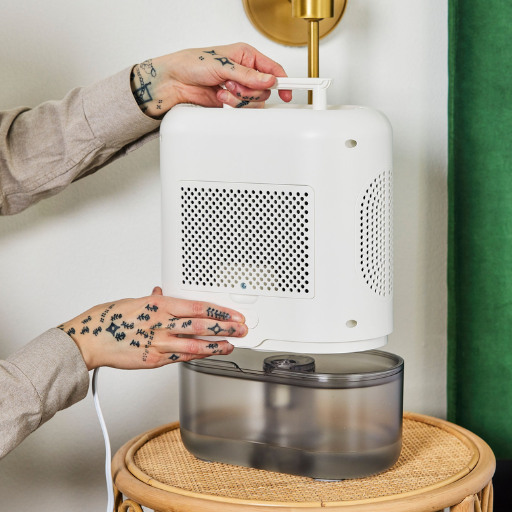
Selecting a quiet dehumidifier for your specific needs requires careful consideration of several factors. To begin with, assess the dehumidifier’s capacity in terms of how well it can manage the size of the room, as well as the humidity levels. Following that, check the model’s decibel rating, choosing one that operates at or below 50 dB because that is considered quiet. Review the model for features such as an Energy Star certification which improves energy efficiency, as well as adjustable humidity settings for greater ease. Don’t forget to cross-reference brands and examine the feedback from other users to confirm their reliability in performance. Following through with these suggestions will allow ease in selecting the best fit for your needs.
Key Features of the Best Dehumidifier for Large Rooms
- High Capacity for Moisture Removal
The best dehumidifiers for large areas must have high rates of moisture removal—usually, 40-70 pints per day of moisture is removed, depending on humidity levels and room size. Look at models with ventilation sufficient for covering areas up to 4,500 square feet for maximum efficiency.
- Energy Efficiency
Best to choose those units that have an Energy Star certification to ensure energy usage will be lowered with a greater performance output. Dehumidifiers with energy-saving features, save electricity but aid in reducing utility costs.
- Quiet Operation
If the area is working or living quarters, it is prudent to choose a dehumidifier whose noise levels are below 50 dB for large rooms. This mitigates cultish humming noises while still making the environment quiet.
- User-Friendly Features
Most recent dehumidifiers enable users to adjust the set humidity to the most comfortable level (and this is bound to change). They include: Auto shut-off and overflow protection that averts spilling liquid from the tank when full, and built-in timers that enable setting of on-off times. For busy areas, moisture can be continuously drained with no attendant work involved.
- Portability and Design
Most modern models forgoing bulk yet retaining efficiency add wheels and extendable handles for better movement use. All models remain compact perfect for large spaces without interrupting the beauty and style of the room.
- Durability and Reliability
Look for reputable brands known for offering long warranties as they tend to have a good warranty and build quality. Knowing what users are saying in the reviews is also important for understanding reliability and actual functionality.
With these features assessed, you can comfortably choose a dehumidifier that is suitable for a large room while relaxing knowing efficiency and comfort will be retained for the long haul.
Evaluating Customer Reviews and Ratings
When evaluating customer reviews and ratings, start by analyzing feedback from trusted e-commerce platforms or review websites, such as Amazon, Home Depot, and Consumer Reports. Look for consistent themes in customer feedback, focusing on performance, noise level, ease of use, and energy efficiency. Positive indicators include high customer satisfaction regarding moisture removal capacity, durable build quality, and low power consumption.
Factors to Consider:
- Moisture Removal Capacity
- For large areas look for units with a capacity of no less than 50 – 70 pints a day. Extremely humid areas may require even higher capacity.
- Energy Efficiency
- To minimize cost over time, select units with Energy Star certification.
- Noise Level
- Most appliances that measure between 50 – 55 powered decibels are sufficiently quiet and do not disrupt day-to-day activities.
- Water Tank Size and Drainage Options
- Choose a unit with at least a 1.8-gallon tank capacity or one with continuous drainage to lower maintenance workload.
- Reliability and Warranty
- Go for dehumidifiers from reputable brands based on user reviews and at least 2 2-year warranty.
Researching the best-rated customer reviews from several leading sites will help you balance functionality, efficiency, and user satisfaction all in one unit.
Considering Energy Star Ratings for Energy Efficiency
Dehumidifiers with an Energy Star rating are certified and designed to reduce energy use while performing as needed; this makes them particularly beneficial for consumers worried about energy consumption. Compared to models without certification, these units save an additional 30% in energy costs, lowering utility expenses and lessening environmental harm. When purchasing an Energy Star dehumidifier, tailored to the room size, removable humidistats, and other features should be considered. Furthermore, dehumidifiers with Energy Star certification tend to operate more quietly, improving comfort. Selected reviews on reputable review-dedicated websites claim that these certified units guarantee support of sustainability and long-term financial savings.
Are 50 Pint Dehumidifiers Suitable for Large Rooms?
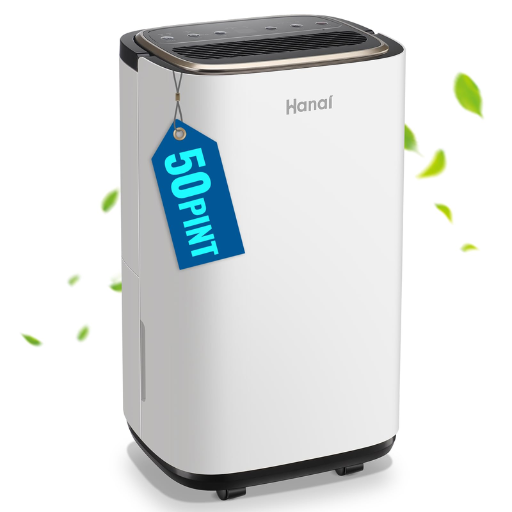
Indeed, 50-pint dehumidifiers work for large rooms including spaces of up to 3,000 square feet with moderate levels of humidity. Their moisture-removing capacity makes them suitable for a variety of spaces, including but not limited to, basements, living areas, and offices. However, different and more damp settings as well as more spacious areas might require a more powerful dehumidifier.
Benefits of a 50-Pint Dehumidifier in Large Rooms
A 50-pint dehumidifier has many advantages when utilized in large rooms. It helps maintain comfortable humidity levels, which prevents mold formation and decreases allergens such as dust mites. These dehumidifiers also enhance the quality of air while safeguarding furniture, electronics, and walls against moisture damage. Their efficient operations make them ideal for spaces up to 3,000 square feet, and for maintaining their health and comfort.
Understanding Moisture Removal Capabilities
For moisture removal, a large space dehumidifier is described as needing to extract 50 pints of moisture from the air in 24 hours, which it is capable of under optimal conditions. This ability ensures high humidity levels in large spaces, which is typical sized around 3,000 square feet. Based on my research, such dehumidifiers are efficient in improving air quality and preventing mold while safeguarding belongings from moisture-related damage. In the case of overly damp environments, positioning the unit centrally and providing proper ventilation greatly improves performance.
Exploring the Midea Cube and Other Models
The Midea Cube is unique due to its ergonomic style and large water tank capacity which enables dehumidifying for long periods before the tank requires emptying. In addition, its compact and stackable design makes it perfect for constricted spaces. User and reviewer feedback indicates the Midea Cube contains multifunctional features such as Wi-Fi connectivity to a mobile app that enables remote monitoring and control of the dehumidifier, along with a high humidity extraction rate, which tackles high humidity effectively.
The latter model faces competition from other models such as the Frigidaire FFAP5033W1, a stalwart in the market known for its Energy Star certification and built-in pump for constant and unattended drainage. This model is ideal for users whose priority is high energy efficiency combined with low maintenance. The hOmeLabs 4,500 Sq. Ft. Dehumidifier represents another noteworthy mention. It is exceptionally efficient in large area dehumidifying, running at quieter sound levels, making it the choice for families or shared households.
To achieve the best results with any of these models, careful attention to placement within the room and regular filter maintenance along with optimal drainage use will ensure functionality alongside longevity. Adjusting dehumidifying settings relative to specific humidity levels and room size recommendations will further enhance the appliances’ energy efficiency.
What Are the Best Features of a Smart Dehumidifier?
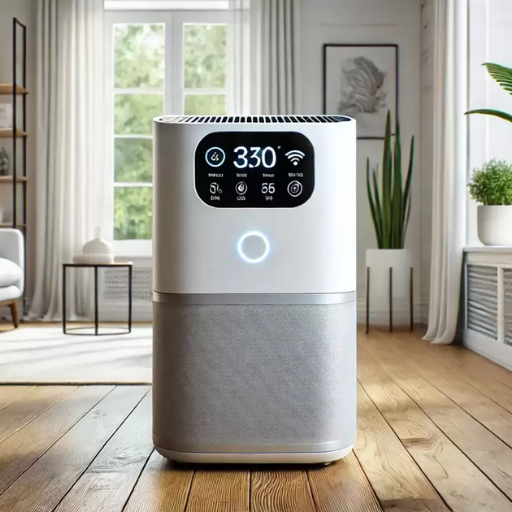
Advanced functions of smart dehumidifiers improve their convenience, control, and efficiency. One of the most beneficial qualities is Wi-Fi access which enables users to view and change settings using a smartphone, even when away from home. In addition, most models have humidity level sensors, which adjust changes automatically to sustain ideal conditions. Users can also schedule specific time frames for the devices to operate. Moreover, integrating with voice assistants like Alexa or Google Assistant allows for even easier functioning. Other features include energy efficiency modes, alert systems for water tanks, and continuous drainage options for greater usability. All these capabilities simplify the dehumidifying process, making it manageable and stress-free.
Advantages of a Built-in Pump in Smart Dehumidifiers
Smart dehumidifiers equipped with a built-in pump greatly improve convenience with regard to continuous drainage, even when the dehumidifier is situated below the drainage outlet. This feature enhances location versatility for example, in basements, in low-grade places and removes the requirement for manually emptying the water tank.
Smart dehumidifiers’ built-in pump brings great convenience with:
- Effortless Drainage: Excluding model adaptations, the pump can move water vertically up to 15 feet, which is ideal for water sinks, windows, or external drains.
- Continuous Operation: Consistent drainage enables the dehumidifier to uninterruptedly run, maintaining pre-set humidity levels without regular user interaction.
- Time and Labor Saving: Easy and time-efficient with no need to routinely check or empty the water reservoir.
Optimized moisture control in different settings is hassle-free with a built-in pump and smart controls typical of modern devices, which are combined with energy efficiency.
Utilizing the Continuous Drain Option for Convenience
The continuous drain setting is beneficial for prolonged and effective dehumidification. The dehumidifier can be connected to a standard hose that drains excess water to a floor drain or sump pump, thus automatically emptying the tank. This feature is great for areas experiencing high humidity or for situations requiring non-stop operation, as it enables continuous operation with little maintenance. Moreover, the use of a gravity drain or built-in pump (when available) for these purposes offers flexibility for placement and setup, which makes the integration of the dehumidifier into the user’s environment less complicated. For best results, the hose must be properly secured to avoid leaks or blockage. In any case, the feature of continuous drain saves effort and time, thus streamlining the process of dehumidification.
Integrating with Smart Home Systems
The ease of monitoring and controlling your home dehumidifier is greatly enhanced with integration into smart home systems. If equipped with Wi-Fi or compatible with Alexa, Google Assistant, or SmartThings, the humidity can be adjusted and monitored outside the home using an app or voice commands. Alerts can also be set which together with schedule setting and adjustments provide effortless manual management, ensuring comfort and efficiency in the home.
How Does a Portable Dehumidifier Compare to Other Types?

Portable dehumidifiers are well-known for their ease of use, as users can move the dehumidifier from one room to another. Unlike portable whole-house dehumidifiers that require complicated installation into an HVAC system, portable models do not require major installation. Portable dehumidifiers also have built-in pumps or programmable settings. Compared to mini-dehumidifiers, portable models are much more flexible, portable, and cost-effective. Without significant investment, users achieve optimal performance from the dehumidifier, targeting specific areas that need removing excess water without getting it compact and hefty.
Benefits of Portable Dehumidifiers for Small Rooms
As asserted by my research, portable dehumidifiers are great for the newfound discomforts of people living in confined spaces because of the damp odors, mold, and mildew they bring about if not taken care of. With the design and functionality offered by these compact dehumidifiers, excess humidity is removed to create a comforting space. Some of the elements that need attention are mildewed that grow easily in mold in confined spaces. mold and mildew are rampant in confined spaces and worsen the surrounding environment. These areas need to be devoid of moisture and unpleasant odors which is exactly what these portable dehumidifiers achieve.
How Portable Dehumidifiers Handle Excess Moisture
Dehumidifiers that are portable manage excess moisture by intake of humid air, which is cooled in a coil and transformed into water, collecting it in a reservoir or draining through a hose. Important indicators are dehumidification capacity, which indicates how much moisture the device can remove within a day, typically in pints ranging from 20 to over 50 for most portable units, and the airflow rate, usually represented in cubic feet per minute (CFM). The units also have humidity sensors that maintain desired humidity levels, usually a relative humidity of 30 – 50%. Furthermore, effectiveness in terms of power consumption is frequently represented by: the Energy Efficiency Ratio (L/kWh) which marks energy efficiency and guaranteed optimal operational performance lower spending of energy.
Finding the Best Dehumidifiers of 2025 for Portability
In determining the best portable dehumidifiers for 2025, we evaluated extracts from leading sources and analysis from consumers and experts. The best contestants in this category offer a combination of effectiveness, portability, and price:
- Frigidaire FFAD2233W1 – This model removes slightly greater than 22 pints of moisture daily. For its superior performance and compact design, it remains highly rated among consumers. It is quiet and energy-efficient which makes it perfect for small to medium-sized areas. Consumers also admire its simple controls and easy-to-clean filter.
- hOmeLabs HME020031N – This unit is well known for its stylish design and dependable moisture control. It has a good 35-pint range daily. It has built-in wheels and a user-friendly interface for ease of use, along with options for continuous drainage. It is best known for its high efficiency in humid climates.
- GE APER50LZ – A large area portable unit with a high capacity of 50 pints, this unit is unique because of its size. It is energy-efficient too with decreaseable, and adjustable settings. It has a smart humidity sensor, integrated handle, and wheels for easy movement.
All of these models are top selections for 2025 because they have the best combination of portability, performance, and energy efficiency.
References
Frequently Asked Questions (FAQ)
Q: Is 51 dB considered quiet for a dehumidifier?
A: Yes, 51 dB is generally considered a quiet noise output for a dehumidifier. Many people find this level of sound manageable, especially when placed in a living space where low noise is preferred.
Q: What is the quietest dehumidifier option available for 2025?
A: The quietest dehumidifier options for 2025 typically feature a noise output of around 45 dB. It’s the quietest level for efficient dehumidifiers that still effectively remove moisture from the air.
Q: How effective is a 20 pint dehumidifier in removing moisture?
A: A 20 pint dehumidifier is quite efficient at removing moisture, especially in smaller spaces. It can remove up to 20 pints of moisture per day, making it suitable for damp environments.
Q: What features should I look for when finding a dehumidifier for my home?
A: When finding a dehumidifier, consider the size of your living space, the dehumidifier’s noise output, energy efficiency, and whether it has features like a built-in compressor or air purifier. A 22-pint or 20 pint model can be suitable for smaller dehumidifiers.
Q: Can a dehumidifier help if my home feels damp?
A: Yes, a reliable dehumidifier can help keep your home feeling dry by removing moisture from the air. This is especially useful in damp areas such as an unfinished basement.
Q: How do dehumidifiers work in removing moisture from the air?
A: Dehumidifiers work by drawing in humid air and passing it over a refrigerated coil. The moisture condenses into water, which is then collected. The dehumidifier removes much moisture, improving indoor air quality.
Q: Are there dehumidifiers that are portable and have a low noise output?
A: Yes, there are portable dehumidifiers that offer low noise output, making them ideal for living spaces where quiet operation is necessary. Some models operate as low as 47 dB.
Q: Does every dehumidifier come with a garden hose for continuous drainage?
A: Not every dehumidifier includes a garden hose, but many models offer the option to attach one for continuous drainage. This feature is convenient for continuous use in areas with high humidity.
Q: What is the significance of a dehumidifier having an Energy Star most efficient rating?
A: A dehumidifier with an Energy Star most efficient rating is designed to use less energy, reducing operating costs while efficiently removing moisture. It signifies that the model meets strict energy efficiency guidelines.

